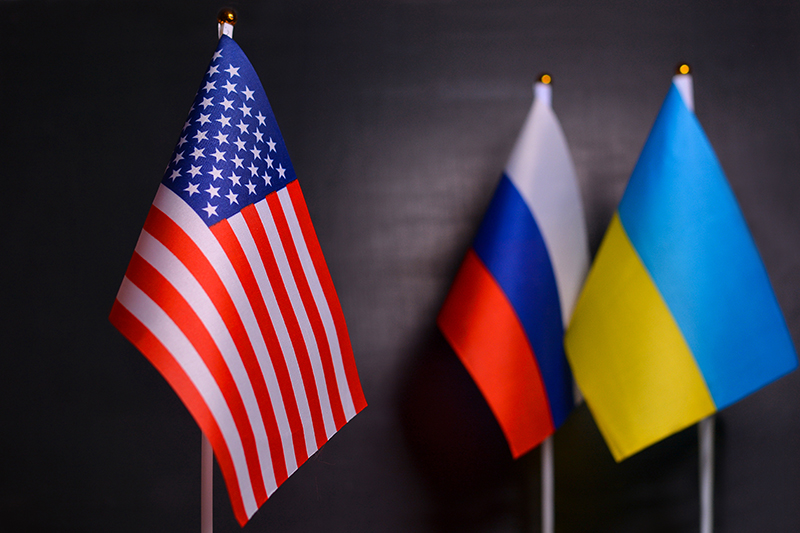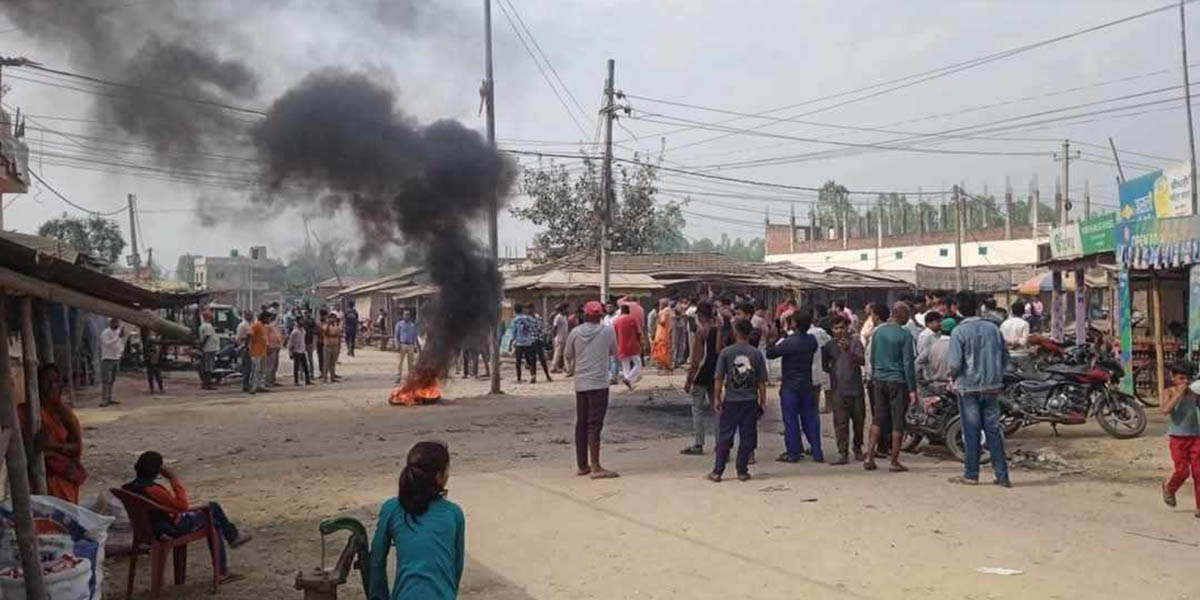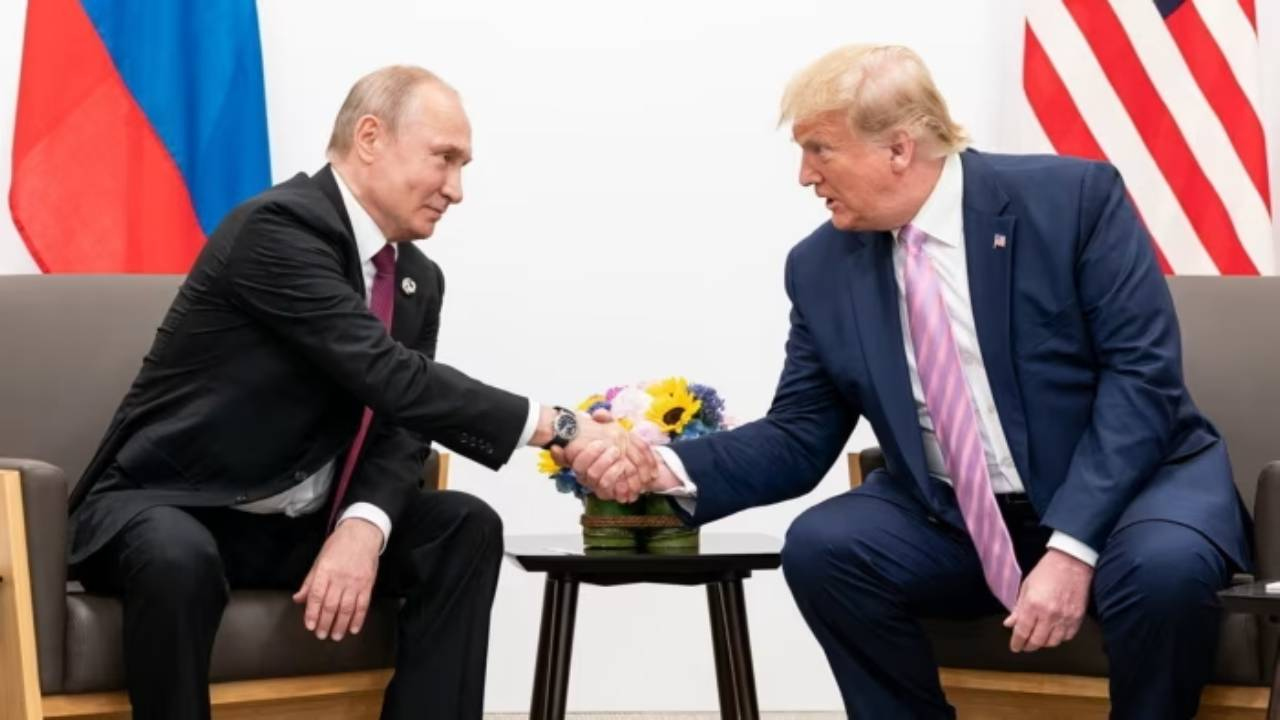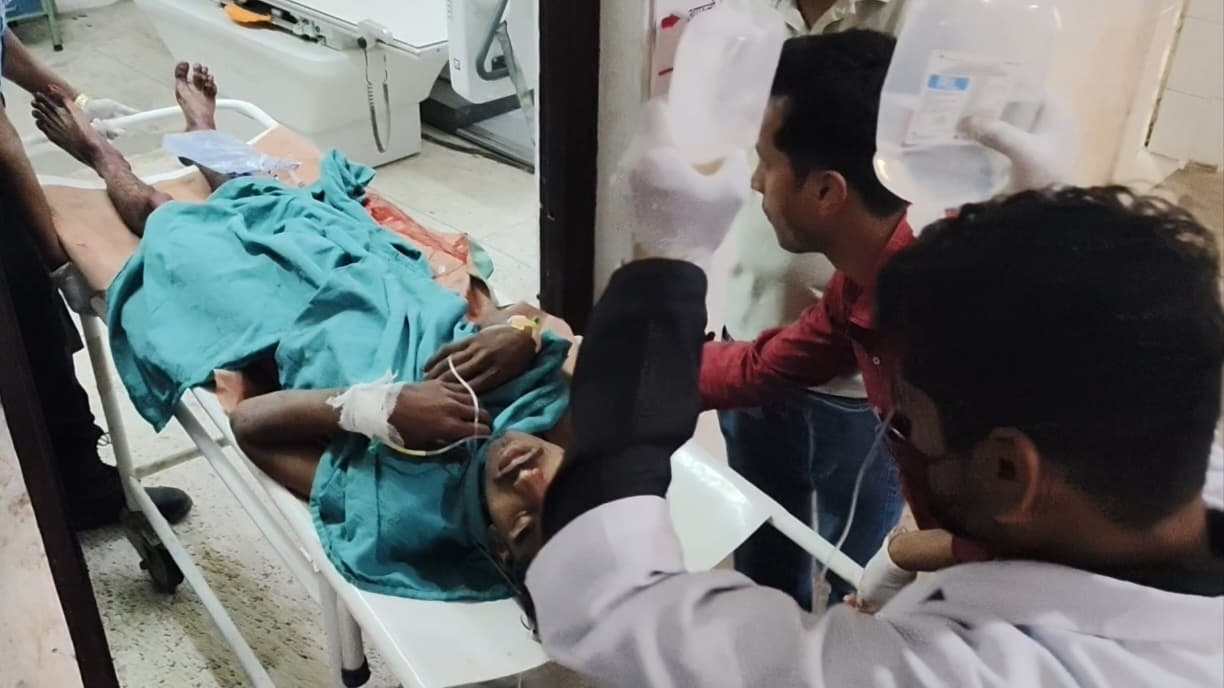Five Simple Steps for US to End Toxic Russia-Ukraine War

The US broke its promises and expanded NATO eastwards, increasing Russian insecurity. The US and the UK also torpedoed peace talks before war broke out. No side can win the war on the battlefield and the US must take five simple steps to bring back peace.
The Bulletin of the Atomic Scientists has just issued its 2023 Doomsday Clock statement, calling this “a time of unprecedented danger.” It has advanced the hands of the clock to 90 seconds to midnight, meaning that the world is closer to global catastrophe than ever before, mainly because the conflict in Ukraine has gravely increased the risk of nuclear war. This scientific assessment should wake up the world’s leaders to the urgent necessity of bringing the parties involved in the Ukraine war to the peace table.
So far, the debate about peace talks to resolve the conflict has revolved mostly around what Ukraine and Russia should be prepared to bring to the table in order to end the war and restore peace. However, given that this war is not just between Russia and Ukraine but is part of a “New Cold War” between Russia and the US, it is not just Russia and Ukraine that must consider what they can bring to the table to end it. The US must also consider what steps it can take to resolve its underlying conflict with Russia that led to this war in the first place.
The US Broke Promises Not to Expand NATO
The geopolitical crisis that set the stage for the war in Ukraine began with NATO’s broken promises not to expand into Eastern Europe, and was exacerbated by its declaration in 2008 that Ukraine would eventually join this primarily anti-Russian military alliance.
Then, in 2014, a US-backed coup against Ukraine’s elected government caused the disintegration of Ukraine. Only 51% of Ukrainians surveyed told a Gallup poll that they recognized the legitimacy of the post-coup government, and large majorities in Crimea and in Donetsk and Luhansk provinces voted to secede from Ukraine. Crimea rejoined Russia, and the new Ukrainian government launched a civil war against the self-declared “People’s Republics” of Donetsk and Luhansk.
The civil war killed an estimated 14,000 people, but the Minsk II accord in 2015 established a ceasefire and a buffer zone along the line of control, with 1,300 international OSCE ceasefire monitors and staff. The ceasefire line largely held for seven years, and casualties declined substantially from year to year. But the Ukrainian government never resolved the underlying political crisis by granting Donetsk and Luhansk the autonomous status it promised them in the Minsk II agreement.
Now former German Chancellor Angela Merkel and French President Francois Hollande have admitted that Western leaders only agreed to the Minsk II accord to buy time, so that they could build up Ukraine’s armed forces to eventually recover Donetsk and Luhansk by force.
In March 2022, the month after the Russian invasion, ceasefire negotiations were held in Turkey. Russia and Ukraine drew up a 15-point “neutrality agreement,” which President Zelenskyy publicly presented and explained to his people in a national TV broadcast on March 27th. Russia agreed to withdraw from the territories it had occupied since the invasion in February in exchange for a Ukrainian commitment not to join NATO or host foreign military bases. That framework also included proposals for resolving the future of Crimea and Donbas.
But in April, Ukraine’s Western allies, the US and UK in particular, refused to support the neutrality agreement and persuaded Ukraine to abandon its negotiations with Russia. US and British officials said at the time that they saw a chance to “press” and “weaken” Russia, and that they wanted to make the most of that opportunity.
The US and British governments’ unfortunate decision to torpedo Ukraine’s neutrality agreement in the second month of the war has led to a prolonged and devastating conflict with hundreds of thousands of casualties. Neither side can decisively defeat the other, and every new escalation increases the danger of “a major war between NATO and Russia,” as NATO Secretary General Jens Stoltenberg recently warned.
Peace Talks, Not More War
US and NATO leaders now claim to support a return to the negotiating table they upended in April, with the same goal of achieving a Russian withdrawal from territory it has occupied since February. They implicitly recognize that nine more months of unnecessary and bloody war have failed to greatly improve Ukraine’s negotiating position.
Instead of just sending more weapons to fuel a war that cannot be won on the battlefield, Western leaders have a grave responsibility to help restart negotiations and ensure that they succeed this time. Another diplomatic fiasco like the one they engineered in April would be a catastrophe for Ukraine and the world.
So what can the US bring to the table to help move towards peace in Ukraine and to de-escalate its disastrous Cold War with Russia?
Like the Cuban Missile Crisis during the original Cold War, this crisis could serve as a catalyst for serious diplomacy to resolve the breakdown in US-Russian relations. Instead of risking nuclear annihilation in a bid to “weaken” Russia, the US could instead use this crisis to open up a new era of nuclear arms control, disarmament treaties and diplomatic engagement.
For years, Russian President Vladimir Putin has complained about the large US military footprint in Eastern and Central Europe. But in the wake of the Russian invasion of Ukraine, the US has actually beefed up its European military presence. It has increased the total deployments of American troops in Europe from 80,000 before February 2022 to roughly 100,000. It has sent warships to Spain, fighter jet squadrons to the UK, troops to Romania and the Baltics, and air defense systems to Germany and Italy.
Even before the Russian invasion, the US began expanding its presence at a missile base in Romania that Russia has objected to ever since it went into operation in 2016. The US military has also built what The New York Times called “a highly sensitive US military installation” in Poland, just 100 miles from Russian territory. The bases in Poland and Romania have sophisticated radars to track hostile missiles and interceptor missiles to shoot them down.
The Russians worry that these installations can be repurposed to fire offensive or even nuclear missiles, and they are exactly what the 1972 ABM (Anti-Ballistic Missile) Treaty between the US and the Soviet Union prohibited, until President Bush withdrew from it in 2002.
While the Pentagon describes the two sites as defensive and pretends they are not directed at Russia, Putin has insisted that the bases are evidence of the threat posed by NATO’s eastward expansion.
Here are five steps the US could consider putting on the table to start de-escalating these ever-rising tensions and improve the chances for a lasting ceasefire and peace agreement in Ukraine:
- The US and other Western countries could support Ukrainian neutrality by agreeing to participate in the kind of security guarantees Ukraine and Russia agreed to in March, but which the US and U.K. rejected.
- The US and its NATO allies could let the Russians know at an early stage in negotiations that they are prepared to lift sanctions against Russia as part of a comprehensive peace agreement.
- The US could agree to a significant reduction in the 100,000 troops it now has in Europe, and to removing its missiles from Romania and Poland and handing over those bases to their respective nations.
- The US could commit to working with Russia on an agreement to resume mutual reductions in their nuclear arsenals, and to suspend both nations’ current plans to build even more dangerous weapons. They could also restore the Treaty on Open Skies, from which the US withdrew in 2020, so that both sides can verify that the other is removing and dismantling the weapons they agree to eliminate.
- The US could open a discussion on the removal of its nuclear weapons from the five European countries where they are presently deployed: Germany, Italy, the Netherlands, Belgium and Turkey.
If the US is willing to put these policy changes on the table in negotiations with Russia, it will make it easier for Russia and Ukraine to reach a mutually acceptable ceasefire agreement, and help to ensure that the peace they negotiate will be stable and lasting.
YOU MAY ALSO LIKE THIS
Robbers Loot Jewelry Shop in Mahottari; Traders Shut Down Market Deman..
Janakpurdham , March 17, 2025 : Traders in Mahottari have launched protests after a group of robbers looted a jewe..
8 Month Ago
Trump and Putin to Discuss Ukraine on Tuesday
Washington,March 17, 2025 – U.S. President Donald Trump has announced plans to speak with his Russian counterpart,..
8 Month Ago
One Injured in Police Firing at Bhathihan, Dhanusha
Dhanusha, March 17 – A clash erupted once again on Monday in Bhathihan, located in Sabaila Municipality, Dhanusha, over the ..
8 Month Ago





